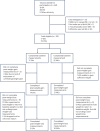Weight gain leads to greater adverse metabolic responses in South Asian compared with white European men: the GlasVEGAS study
- PMID: 39152223
- PMCID: PMC11349579
- DOI: 10.1038/s42255-024-01101-z
Weight gain leads to greater adverse metabolic responses in South Asian compared with white European men: the GlasVEGAS study
Abstract
South Asians (SAs) develop type 2 diabetes at lower body mass index values than white Europeans (WEs). This basic human experimental study aimed to compare the metabolic consequences of weight gain in SA and WE men without overweight or obesity. Fourteen SAs and 21 WEs had assessments of body composition, metabolic responses to mixed-meal ingestion, cardiorespiratory fitness and physical activity, and a subcutaneous abdominal adipose tissue biopsy, before and after 4-6 weeks of overfeeding to induce 5-7% weight gain. Here we show that body mass index and whole-body adipose tissue volume increases similarly between ethnic groups, but SAs gain less lean tissue. SAs experience a substantially greater decrease in insulin sensitivity compared with WEs (38% versus 7% decrease, P = 0.009), have fewer small (37.1% versus 60.0%, P = 0.003) and more large (26.2% versus 9.1%, P = 0.005) adipocytes at baseline and have a smaller decrease in very small adipocytes with weight gain (-0.1% versus -1.9%, P < 0.0001). Ethnic differences in adipocyte morphology are associated with SA's greater adverse metabolic changes with weight gain. ClinicalTrials.gov registration: NCT02399423 .
© 2024. The Author(s).
Conflict of interest statement
N.S. reports consulting and/or speaker fees from Abbott Laboratories, Amgen, AstraZeneca, Boehringer Ingelheim, Eli Lilly, Hanmi Pharmaceuticals, Janssen, Merck Sharp & Dohme, Novartis, Novo Nordisk, Pfizer, Roche Diagnostics and Sanofi; and institutional grant support from AstraZeneca, Boehringer Ingelheim, Novartis and Roche Diagnostics outside the submitted work. The other authors declare no competing interests.
Figures




References
Publication types
MeSH terms
Associated data
LinkOut - more resources
Full Text Sources
Medical

